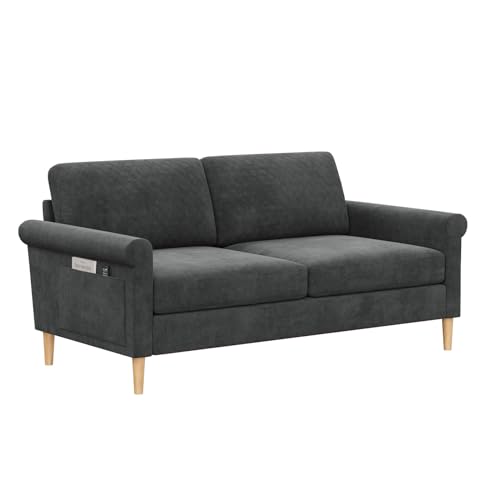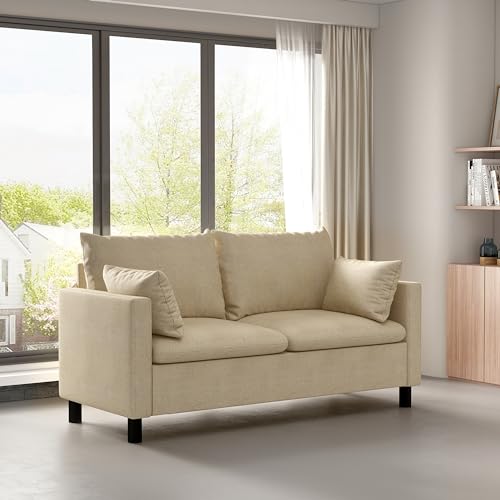Guide To 2 Seater Leather And Fabric Sofa: The Intermediate Guide For …
페이지 정보

본문
 Choosing Between a 2 seater leather and fabric sofa (humanlove.stream)
Choosing Between a 2 seater leather and fabric sofa (humanlove.stream) If you're looking for a new sofa, it is difficult to decide between fabric or leather. This is especially the case if you're not a professional with knowledge of furniture.
If you're looking for a new sofa, it is difficult to decide between fabric or leather. This is especially the case if you're not a professional with knowledge of furniture.If you have kids or reside in an apartment The leather option might be the best choice for you. It's easy to clean and it looks fantastic in a lot of homes.
Comfort
A sofa is the focal point of most people's living spaces and is a significant purchase. You want a sofa that you can sit for hours and is stylish, blends with your room style and can stand the test of time. It isn't easy to choose between leather and fabric, but you must consider your lifestyle, budget and priorities before making a decision.
Leather is a high-end, luxurious material that exudes style and elegance in any home. It is tough and stain-resistant, it is resistant to children and pets and can last for a long period of time with proper care. It can be expensive in the beginning and may require regular conditioning to prevent cracks or peeling.
fabric 2 seater sofas are available in a wide selection of styles, colors and fabrics. They are more affordable than leather sofas. They are also more comfortable and more welcoming and can feel "broken in" from the beginning. They are prone to dust mites and pet hairs, and could require frequent cleaning. But, with the advancement of technology and high-performance fabrics, there are now hypoallergenic alternatives available.
Fabric sofas can last up to 15-years if they are properly maintained. Regular vacuuming and deep-cleaning will ensure that the fabric stays clean and free of odours and stains. They can also flatten and sag as time passes, just as leather. A lot of fabric 2 seater couches are treated with chemicals to make them stain resistant and flame retardant. They can release volatile organic compounds that could affect indoor air quality and cause allergies.
Durability
We usually choose sofas made of fabrics that are very durable, especially if we have children or pets. You don't need to spend a lot of money in the beginning when you're likely to regret it after the first scratch or claw. You don't want a cheap item that can't withstand daily use.
Leather is also extremely resilient and has a remarkable tear strength. It also lasts up to 4 times longer than fabric and is naturally resistant to cracking, fade and flaking over time. It can be treated to replenish its natural oils and make it look like new.
Fabrics are less expensive and come in many different colors, patterns and textures that can be adapted to any style of interior. Fabrics are less difficult to clean and can stand up to some wear and tear. However, they may fade with time and are more prone to moisture.
Microfiber is durable and comes in a range of colors. However, it might not be as strong as genuine leather. It might also not be able to withstand scratches. It's nevertheless a great option for families due to its resistance to stains and spills. It's also simple to clean using an aqueous cloth.
Suede is more difficult to clean and repair than leather. It can also lose its shape if it is not regularly conditioned and can feel quite rough to the touch. It is also a thin material, so it might not be as tough as sheepskin and cowhide leather.
Allergens
Fabrics can have a major impact on allergies. It is crucial to know how different options perform. Fabrics tend to retain allergens like dust mites pet dander, and mold that can cause symptoms of hay fever, rhinitis, asthma and eczema. These fabrics are perfect for their health.
Leather is, however isn't prone to accumulating allergens and provides constant comfort throughout the year. However, it could cause dermatitis, especially for those who suffer from contact dermatitis or are sensitive to the chemicals used in the tanning process. To minimize skin reactions, it is important to use vegetable-tanned products and maintain a vigilant skincare routine.
Leather and fabric sofas are sturdy, but the material you choose will have a major impact on how well your couch is able to stand up to wear. A top-quality fabric two seater sofa will not suffer from shrinking or fading and can withstand spills body oils, spills and everyday use. Modern fabric couches are often equipped with stain resistant treatments to make cleaning simpler.
While you might not be able completely avoid an allergic reaction to the leather in your sofa, it is possible to reduce allergens by having a lint roller near and regularly vacuuming your living space. This will help in reducing the amount of pet hair, dirt and dust mites that accumulate on your sofa. If you're still suffering from allergies, consider replacing your sofa with a more hypoallergenic one. For instance, a sofa made of synthetic or vinyl will be less likely to keep dust or pet dander out of the mites. It will also allow you to breathe easier.
Scratches
When buying a leather sofa, it is crucial to consider how much wear and tear you can anticipate from it. The color, finish and the quality of the leather are all crucial factors in how long a sofa will last. It is also important to make sure that it is strong enough to withstand spills and other messes. This can be accomplished by looking for a couch with a strong hardwood frame and high-density foam cushions.
Leather can be damaged due to many different reasons such as stretching it, marking territory, or in the process of reliving tension. Scratches vary in severity. They vary from minor surface scratches to severe cuts or punctures. Minor scratches can be repaired by using a conditioner for leather. This will restore the balance between oil and moisture within the leather and prevent it from drying out or cracking. The extent of damage will determine the type of treatment needed.
It is a good idea for cat owners to trim their cats' nails regularly. This will stop them from scratching the couch. You can also redirect the scratching behavior by providing them with alternative scratching surfaces like sisal rope or cardboard. You can also use a pet safe furniture polish which you can apply using a soft clean cloth.
It is important to wash your leather sofa regularly and keep it out of direct sunlight and heat since they could dry it out. This could cause cracks in the leather. Repairing this can be difficult and requires the reupholstery. It is also a good idea to use a conditioner for leather to keep the leather supple.
Smell
A leather couch is known to have a slightly different scent than fabric. This is because it's more porous and will absorb unwanted odors, such as smoke, body odor, or food easily. The good news is, the smells will usually disappear after a while and especially when you use a non-toxic cleaning product that is fragrance-free.
If the smell is intense, it could mean there's something wrong with the foam. This is typically caused by the chemical off-gassing that occurs in polyurethane, which is a petroleum-based derivative. If this is a problem, look for couches that are made from CertiPUR US certified or natural latex.
Another method to determine faux leather is by feeling for bumps or a texture on the back of the sofa. This is a sign that the leather is not authentic top grain. You can also do an inspection by tilting the sofa over and observing any exposed upholstery backing. If you can smell it, then it's probably a synthetic material like polyester or polyurethane. These types of materials will have a distinct scent than leather.
Leather couches are more prone to picking up odors, the best method to avoid this is to regularly clean your sofa. This will keep it looking its best and smells great, as well as preventing it from becoming stiff or cracked in time. Start by vacuuming and dusting, then wiping the couch with baking soda (a natural method of eliminating odors). You should do this at least every two weeks or more to get rid of any dirt and dust build-up. Apply leather conditioner to preserve the texture and color of your sofa.
- 이전글What's The Current Job Market For Fabric Two Seater Sofa Professionals? 24.10.25
- 다음글You'll Never Guess This 2 Seat Fabric Sofa's Tricks 24.10.25
댓글목록
등록된 댓글이 없습니다.

